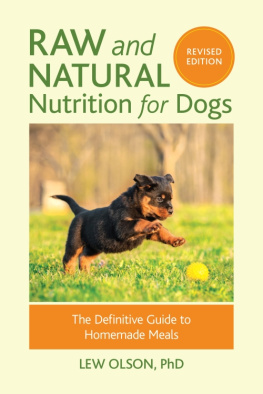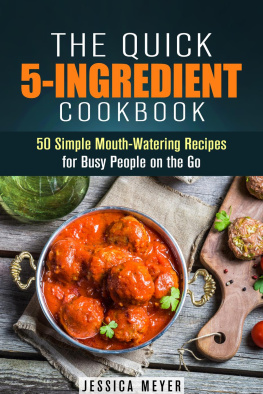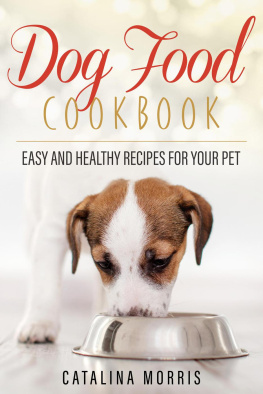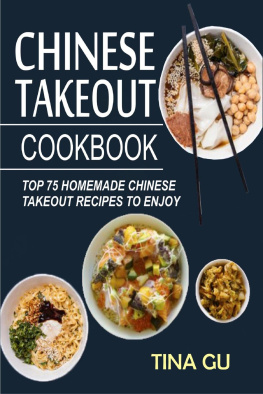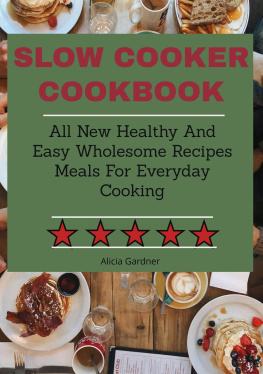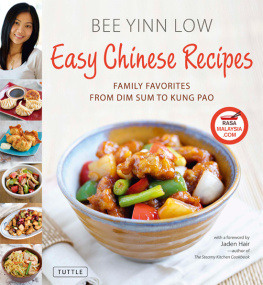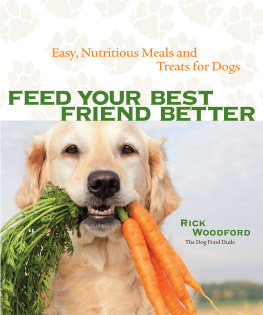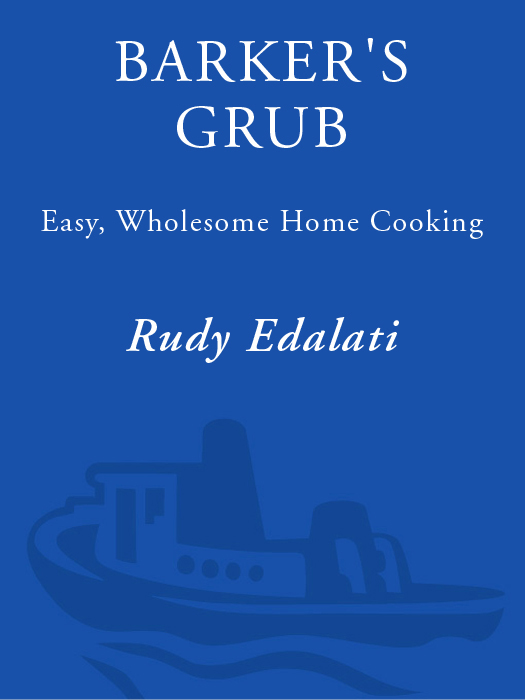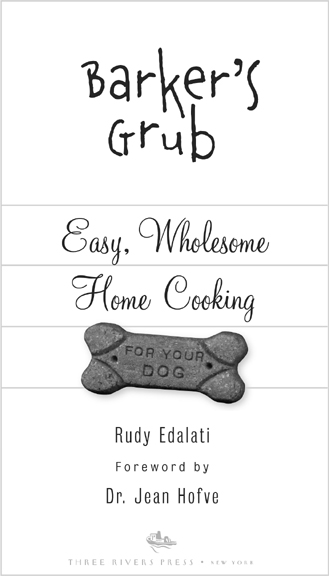Acknowledgments
I would first like to thank Caroline Casey, without whom this book would never have been possible. It was her belief in my recipes and approach to nutrition, as a loyal friend and client, which originally brought my work at Barkers Grub to the attention of Three Rivers Press.
I am enormously grateful to my dear friend and mentor, Dr. Michael W. Fox, one of the worlds deepest souls. He has always fed my curiosity about animal nutrition with practical information and most generously shares his personal and professional resources. Thanks, Mikey!
My deep gratitude extends to Stephanie Gunning, whose enormous talent as a writer and amazing editorial vision guided me through the process of creating this work. She held my hand through the rough spots and anxious moments, and her wonderful insights and patience gave me courage to set my ideas down in print.
My family has always been a tremendous support, especially my mother, Parvin, and my brother, Cameron. Without them I would not have started or maintained my cooking business, much less have written this book.
Many thanks to Sarah Silbert, my editor, and the wonderful staff at Three Rivers Press, who saw this project through to completion; and also to Steven Magnuson and Jessica Schulte, who initiated it. And Lynda Bamzi for the photos.
Dr. Monique Maniet of Veterinary Holistic Care of Bethesda, Maryland, took a chance on me when I opened Barkers Grub. Her belief in the power of nutrition is a constant inspiration. I am also indebted to Dr. Grace Calabrese and Dr. Leslie Taylor, two exceptional veterinarians, for giving valuable time and consideration to this project; their expertise helped me navigate its creation. I also respect their work with shelter animals.
My appreciation extends to readers Sara J. Whitcomb, Joel Finkelstein, David Powers, Melanie Patt-Corner, and Jean Hofve, DVM, of the Animal Protection Institute, for commenting on various drafts of the manuscript and for the wonderful foreword.
Thanks to my wonderful and loyal clients at Barkers Grub without whom there would be no recipes or stories to share.
And finally, I would like to thank the animals in my life: my dogs Hannah, Oscar, George, and their foster packmate, Ginger, for their constant unconditional love and emotional support; my horse, Haley, one of the most important teachers of my life; and my cats, Edgar, Pufang, Cheeba, and Trang-Doo, for their warmth and affection.
Foreword
O ver the last ten years or so, peoples interest in nutrition has increased exponentially, not just for ourselves, but also for our companion animals. There are dozens of dog diet gurus, each claiming to be the last, best word on the subject. Many of these diets are complex and cumbersome, some less than palatable, some downright dangerous. Into the fray steps Rudy Edalati, with her simple, commonsense recipes. She has reclaimed her elders nutritional knowledge: that good, wholesome, nutritious food must come first if we want to see our dogs express their most healthy and vital selves.
From the cheapest generic kibble to the expensive medical diets, commercial pet foods are highly processed and treated with chemicals and additives to make them complete as well as palatable. Nutrients that are destroyed by processing are replaced with synthetic equivalents. Most dry foods contain powerful synthetic antioxidants to give them a long shelf life. For the most part, they contain animal organs and parts deemed not fit for human consumption. Do pet food manufacturers really think that ingredients that are too unhealthy for people to eat are good for dogs? Or that food from bags that have been sitting in a warehouse for a year or more is wholesome fare?
In fact, they are not. Many people have discovered, to their dismay, that processed pet foods have damaged their animals. Allergies, ear infections, diabetes, pancreatitis, inflammatory bowel disease, dull coats, dandruff, lethargy, dental diseaseall have dietary links. While diet is not the sole cause of disease, it is clear that the bodyhuman or caninecannot maintain itself, let alone heal itself, without good groceries.
When we bring a dog into our lives and homes, we assume full responsibility for his physical and emotional needs. Adoption includes a commitment to tend to our dogs needs for shelter, water, exercise, affection, training, play, and food. To us, dogs arent second-class citizens; they are members of our family. Therefore, we should put as much thought and care into what goes into his bowl as into ours. Rudy has made this part of canine care, at least, easy and fun. Most of the recipes can be prepared right along with food we are fixing for ourselves, with very little extra effort. Feeding dogs really is a lot like feeding ourselves and our children. We would never consider a diet consisting entirely of processed foods from cans, boxes, and bags to be healthy for usand its really no different for our dogs. For all of us, a return to the basics, to a more wholesome, natural diet, makes the most sense.
Critics may disparage the lack of scientific verification of the recipes in this book. Let the critics take a good look at the standards by which commercial pet food is made. How many dogs and cats have sickened or even died from commercial foods, while nutritionists struggled to understand how much of what nutrients really ought to be included? Today, we know how much of each vitamin and mineral will prevent overt deficiency diseases, and how much might be toxic. But no one really knows what the optimal diet for our companion animals looks like. I suspect it doesnt look very much like kibble.
The proof of the pudding is definitely in the eating. If you feed your dog the recipes in this book, as part or all of her diet, you will see a change for the better. Rudy has seen it in her dogs, and in dozens of clients dogs. If youre anything like me, when you start cooking for your animals, youll end up eating better yourself. Its a win-win situation. Enjoy!
Dr. Jean C. Hofve
veterinarian, animal advocate,
and author
Sacramento, California


